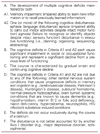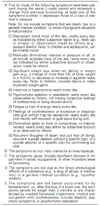Classification of psychiatric disorders of the elderly
Article information
Abstract
Mental disorders in the elderly people are one of the main health problems of Korea due to the rapid aging of the population. Knowledge about the classification of mental disorders in the elderly people is required for the proper clinical treatment of the mentally ill elderly people. The two most important psychiatric classification systems are the Diagnostic and Statistical Manual of Mental Disorders text revision (DSM-IV-TR) developed by American Psychiatric Association and the International Classification of Diseases developed by the World Health Organization. These two classification systems are based on the clinical features. Specified diagnostic criteria which describe the clinical features are provided for each specific mental disorder. The DSM-IV-TR lists 365 disorders in 17 sections, which will briefly be described in this article. The diagnostic criteria of the some common and important mental disorders of the elderly people will be described in detail.




